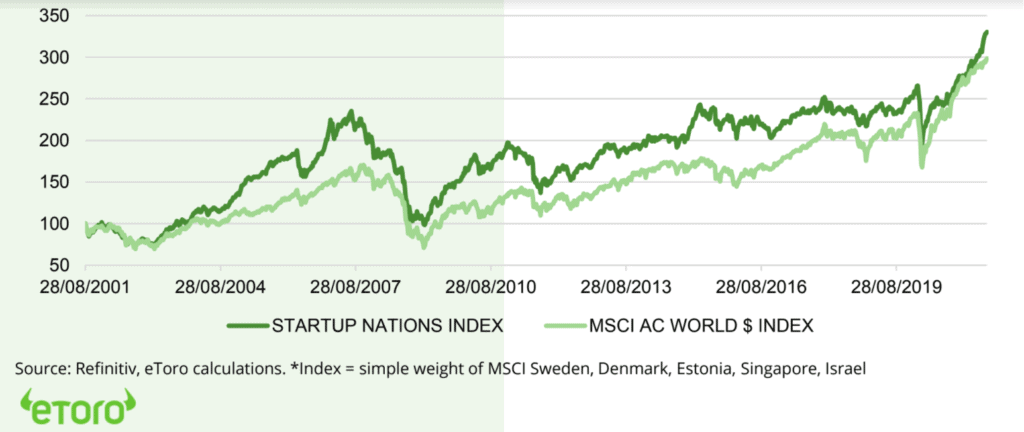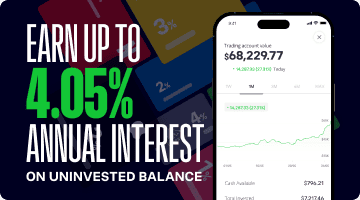Summary
Focus: Diversification check-up
US equities have rallied hard, and we see lower returns ahead, putting a focus on diversification. But traditional investment alternatives like cash and bonds are even more expensive, and our investor survey shows many unsure of what to do, and not rebalancing regularly. We look at three equity alternatives to help lower risk and increase diversification, such as 1) defensive (Smart Portfolio’s like @Four-Horsemen), rather than disruptive tech 2) financials (with ETF’s like XLF) and international equities, and 3) wider equity styles – from high dividends (HDV) to mid cap (MDY) and low volatility (SPLV).
Steady as she goes
We saw another positive week for global equities, resilient to Fridays very weak US jobs report, and with stabilizing Chinese equities. Commodities benefitted from a weaker USD, whilst booming NFT interest helped push crypto assets higher. We think widespread concerns on traditionally weak September market seasonality are overdone. The real risk focus should be on the US political stand-offs, over raising the $28.5 trillion Federal debt ceiling and passing of Democrats massive $3.5 trillion (15% of US GDP) stimulus plan. See our global markets summary presentation here for background.
The road to S&P 500 over 5,000
Further earnings upgrades and lower US 10- year bond yields combine to boost our ‘fair value’ S&P 500 valuation, and give a clear roadmap to the US equity index trading over 5,000 by the end of next year.
Opportunities in start-up nations
The world’s smallest countries have some of the most innovative companies and best investment returns. Our Start-up nations index has consistently beaten global equities. But this also likely understates the performance, as many of the most successful companies only list on overseas stock exchanges.
Non-fungible tokens driving crypto
Bitcoin (BTC) saw a positive week, taking its price to $50,000. Altcoins continue to lead the price recovery, with Ethereum (ETH), Solana (SOL), and Polkadot (DOT) all benefitting from the recent surge in non-fungible token (NFT) trading. This has driven the rate of Ethereum ‘burning’ higher and cut its net supply outlook.
The week ahead: A short week, and the ECB
1) Shortened week with US and Canada markets closed for labour day on Monday.
2) European Central Bank (ECB) could cut its €80bn/month bond buying, raising bond yields.
3) Earnings seen from meme-leader GameStop, ‘athleisure’ Lululemon, UiPath, and Kroger.
Our key views: Staying the course
We see a positive outlook of 1) vaccine rollout and economic re-opening, and 2) still huge policy support, offsetting virus third wave and Fed tightening risks. We favour assets most helped by this growth rebound: equities, commodities, crypto, and value, and are cautious fixed income, USD, defensive equities and China.
Top Index Performance
| 1 Week | 1 Month | YTD | |
| DJ30 | -0.24% | 0.46% | 15.56% |
| SPX500 | 0.58% | 2.23% | 20.75% |
| NASDAQ | 1.55% | 3.56% | 19.21% |
| UK100 | -0.14% | 0.22% | 10.49% |
| GER30 | -0.45% | 0.13% | 15.03% |
| JPN225 | 5.38% | 0.64% | 6.14% |
| HKG50 | 1.94% | -1.06% | -4.88% |
*Data accurate as of 06/09/2021
Market Views
Steady she goes
- It was another positive week for global equities. The US saw new record market highs, with the growth outlook more resilient that Fridays very weak jobs report implies. Chinese equities stabilized as mega-caps, from Alibaba (BABA) to Tencent (0700.HK), got behind President Xi’s ‘common prosperity’ strategy. Japan rallied as PM Suga resigned. Booming NFT interest pushed crypto higher, whilst commodities benefitted from a weaker USD. See our global markets summary presentation here for more.
The real September risks
- Investors are too worried about weak back-to school September seasonality, as investors and liquidity return to markets after summer. S&P 500 averaged a 0.2% September return the last 50 years, the 3rd poorest month of the year. We expect some volatility after the remorseless rally since November, but see traditional seasonal patterns as scrambled by the virus and economic re-opening. We see instead two more important looming events in Washington.
- These are the political stand-offs over raising $28.5 trillion Federal debt ceiling and passing Democrats massive $3.5 trillion (15% US GDP) stimulus plan. Either could disrupt markets.
The road to S&P 500 over 5,000
- Further earnings upgrades and lower US 10- year bond yields combine to boost our ‘fair value’ S&P 500 valuation, and give a a clear roadmap to the index trading over 5,000.
- Higher-for-longer valuations and our above consensus index earnings growth view, of $210 (+50% vs 2020) this year and $240 next (+20%), gives a year-end S&P 500 target of 4,700, and 5,050 for next. This is over 10% from here and implies a very rare 4th year of 10%+ returns.
- Higher yields cut the present value of future cash flows. A 0.5% higher 10-year yield lowers our P/E by 10%. Financial (XLF) and commodity sectors are positively exposed to this, whilst Tech (XLK) has become negatively correlated; as is now less cyclical and with valuations higher.
Opportunities in start-up nations
- The world’s smallest countries have some of the most innovative companies and historically best investment returns, but are often overlooked. There are around 195 countries, but just 5 of them make up 75% of global equity markets.
- Small and open economies are forced to be innovative and flexible, and benefitted as new economy shifted focus from natural resources to knowledge. Our Start-up nations index ranks the best five overall for start-up friendliness, economic competitiveness, and ease-of-doing business. Their GDP growth is 70% above the developed world average the last 20-years.
- Their equity markets have outperformed (see chart), and this is understated as their most innovative stocks often only list abroad, such as Sweden’s Spotify (SPOT) and Oatly (OTLY), Singapore’s Sea (SE) and Flex (FLEX), Israel’s Monday.com (MNDY) and SentinelOne (S.US) amongst many, Denmark’s Just Eat (TKWY.NV) and Zendesk (ZEN), and Estonia’s Playtech (PTEC.L) and Wise (WISE.L).
Start-up Nations Index* vs Global Equities (20 Years, Rebased to 100)

Non-fungible tokens driving crypto
- Bitcoin (BTC) saw a positive week, taking it to $50,000, and it’s rally this year to 75%, the most of any asset class. Altcoins led the rebound though, with Ethereum (ETH) Polkadot (DOT), and Solana (SOL) all up over 20% in the last seven days, driven by soaring NFT interest.
- Interest in non-fungible tokens (NFT’s) has surged, with over $1.5 billion worth of NFT’s traded on the largest marketplace, OpenSea, over the last month. This has helped boost Ethereum (ETH) , as it has driven ETH ‘burning’ higher, and could see net supply turn negative.
Breakfast costs surging with the Ag rally
- Commodities rose last week, as weak China growth data boosted expectations of a positive macro policy response, whilst OPEC+ stayed on course to gradually add supply to oil market, and EU carbon credit prices hit new highs. Our agricultural ‘Breakfast’ cost index keeps soaring, +46% the past year, with world food prices at decade highs. Prices have been driven by weather disruptions, even as the wider commodity rally took a breather. Disruptions likely continue, with La Niña weather forecast for major producers Brazil and Argentina.
- Consumer food stocks, from General Mills (GIS) to Kraft Heinz (KHC), and emerging markets are bearing brunt of the impact. Ag suppliers, from Deere (D) to Mosaic (MOS), have benefitted.
US Equity Sectors, Themes, Crypto assets
| 1 Week | 1 Month | YTD | |
| IT | 1.08% | 3.88% | 23.89% |
| Healthcare | 1.77% | 2.44% | 18.20% |
| C Cyclicals | 0.88% | 2.11% | 12.94% |
| Small Caps | 0.65% | 4.36% | 16.06% |
| Value | -0.14% | 2.17% | 18.36% |
| Bitcoin | 4.11% | 27.04% | 75.38% |
| Ethereum | 21.84% | 46.56% | 425.74% |
Source: Refinitiv
The week ahead: ECB meets in a short week
- It will be a shortened week for both the US and Canadian markets, with Monday’s labour day holiday, that customarily marks the end of the northern hemisphere summer holidays and beginning of the new school year.
- Thursday’s European Central Bank (ECB) meeting could see a small reduction in pace of its €80bn/month bond buying, as economies are now recovering and recent inflation above expectations. This have already pushed up European government bond yields.
- See earnings due from emblematic ‘meme’ stock GameStop (GME), $50 billion market cap. ‘athleisure’ Lululemon (LULU), robotic process automation company UiPath (PATH), cyber security Zscaler (ZS), and retailer Kroger (KR).
Our key views: Staying the course
- We see a positive scenario of 1) global vaccine rollout and economic re-opening, 2) still large policy support of low interest rates and fiscal expansion. This is resilient to current volatility.
- The main risk is Fed monetary policy tightening, which we see as gradual and well-flagged, alongside growth risks from the third Covid virus wave, which we see as peaking soon.
- We focus on so-called reflation and cyclical assets that benefit most from the growth rebound: commodities, crypto, small cap, and value equities. We are more cautious on fixed income, the USD, defensive equities and China.
Fixed Income, Commodities, Currencies
| 1 Week | 1 Month | YTD | |
| Commod* | 0.79% | 2.57% | 24.42% |
| Brent Oil | 1.13% | 2.82% | 40.14% |
| Gold Spot | 0.52% | 3.75% | -3.77% |
| DXY USD | -0.61% | -0.74% | 2.43% |
| EUR/USD | 0.70% | -0.99% | -2.75% |
| US 10Yr Yld | 1.19% | 2.28% | 40.67% |
| VIX Vol. | 0.12% | 1.61% | -27.87% |
Source: Refinitiv. * Broad based Bloomberg commodity index
Focus of Week: diversification check-up
Three ways to increase your equity diversification
The US equity market rally has been huge and long-lasting. We forecast another 10% from here over the next year or so, a lower return than the return in recent years. This makes diversification more important than ever, but it is also harder to achieve. Traditional assets like cash and bonds have never yielded less and are guaranteed to give a negative real (inflation-adjusted) return. Our global retail investor survey shows 23% of investors unsure of their next investment move, and 27% have not made any portfolio changes during the year. We look at three ways to gain more diversification and lower risks within equities.
Traditional defensive asset classes such as cash and bonds are looking less attractive
The traditional ways to diversify have been to own cash and bonds, as their prices have moved opposite to the S&P 500 (see chart). They are still important today, but less attractive. The US money market yield is 0.05% and guaranteed to see a negative return versus US inflation. Similarly, 10-year bond yields are 1.3% after forty-year rally from 15%. We see bond yields rising (and prices falling) as Fed moves to tighten policy.
1) Defensive versus disruptive tech
‘Big tech’ has become the new defensives within equities. With good top-line revenue growth, profit margins near twice the S&P 500 average, and strong balance sheets. By contrast the fast-growing disruptors – from Tesla (TSLA) to Palantir (PLTR) – could suffer as the business cycle ages, interest rates start to rise, and investors are less eager to support 100x P/E valuations and further financing needs.
2) Value pockets in financials and overseas
Lower valuations are a big risk, with today’s 21x S&P 500 valuation high. But not everything is expensive. The financials (XLF) sector, and other so-called Value (IWD) segments’ (from commodities to industrials) are 40% cheaper. Similarly, international (IXUS, IEFA) equities have one of the largest valuation discounts ever.
3) Equity styles from high dividend, to mid-cap, and low volatility
Bonds have traditionally helped generate income, provided diversification, and reduced portfolio risk. These characteristics are also possible across different equity styles. Income can be generated from high dividend yield strategies (HDV, UDVD). Greater diversification from mid-cap equities (MDY, VO). Risk management from low volatility equity funds (SPLV, USMV). These provided protection in the 2000 dot-com crash (outperforming the S&P 500 by 26-72%) and in the global financial crisis (outperforming by 4-12%).
Correlation* between S&P 500 and other assets (Last 10-Years)
Key Views
| The eToro Market Strategy View | |
| Global Overview | Positive scenario of 1) global vaccine rollout and economic re-opening, 2) support from low interest rates and government spending. Main risk is from US Fed monetary policy tightening, but will be well-signalled and very gradual. Economies are increasingly resilient new virus case ‘waves’. Focus on most growth sensitive assets: equities, commodities, crypto, small cap and value. Relative caution on fixed income, USD, defensive equities and China. |
| Traffic lights* | Equity Market Outlook |
| United States | World’s largest equity market (55% of total) seeing strongest GDP recovery in 30-years driving earnings upside ‘surprise’, and a rare third consecutive year of 10%+ equity market returns. Valuations at 21x P/E are 25% above historic levels but supported by still low bond yields and strong earnings growth outlook. See further cyclicals and value catch-up, after a decade of underperformance, whilst tech is well supported by its structural growth outlook. |
| Europe & UK | A big beneficiary of the global growth rebound. Helped by 1) a greater weight of sectors most sensitive to the growth rebound, and lack of tech, 2) 25% cheaper valuations than the US, 3) a decade of under performance has made under-owned by global investors. Combination of lower-for-longer ECB plus multi-year €750bn ‘Next Generation’ government spending to drive European GDP and earnings growth more than the US, for the first time in a decade. |
| Emerging Markets (EM) | China, Korea, Taiwan dominate EM, with 60% weight, and is more tech-centric than US. China has world’s strongest GDP growth, and benefitted from being ‘first in, first out’ of crisis, but its tech sector crackdown is hurting the market. LatAm and Eastern Europe have more upside to vaccine rollouts, global growth recovery and higher commodities. |
| Other International (JP, AUS, CN) | Canada and Australia benefit from strong equity market weight in commodities and financials, as global growth rebounds and bond yields set to rise. Japanese equities among cheapest of any major market and vaccination rates accelerating, but has structural headwinds of low GDP growth, an ageing population, and world’s highest debt. |
| Traffic lights* | Equity Sector & Themes Outlook |
| Tech | The broad ‘tech’ sector of IT, communications, and parts of consumer discretionary (Amazon, Tesla), dominates US and Chinese markets. Expect a more subdued 2021 after dramatic 2020 rally. But are structural stories with good growth, high profitability, and clean balance sheets that justify high valuations, and should continue to rise. |
| Defensives | Healthcare, consumer staples, utilities, and real estate sectors traditionally offer more defensive cash flows, less exposed to changes in economic growth. This has also made them more sensitive to rising bond yields. We expect them to relatively underperform in the current cyclicals focused environment with growth and earnings strong. |
| Cyclicals | We expect cyclicals – consumer discretionary (autos, apparel, restaurants), industrials, energy, and materials, to lead market performance. They are most sensitive to the sharp economic recovery and higher bond yield outlook, with more sensitive businesses, depressed earnings, cheaper valuations, and have been out-of-favour for many years. |
| Financials | Financials will benefit from the GDP growth recovery, with higher loan demand and lower defaults. Similarly, they benefit from higher bond yields outlook, charging more for loans than they pay for deposits. Sector has cheapest P/E valuation of any, and regulators recently giving flexibility to pay large 8-10% dividend and buyback yields. |
| Themes | We favour small cap vs large, on more GDP growth exposure, earnings upside, and domestic focus. Similarly, value over growth on GDP recovery, lower valuations, under-ownership after decade under-performance. Dividends and buybacks recovering with cash flows. Power of dividends under-estimated, at up to 1/2 of total long term return. |
| Traffic lights* | Other Assets |
| Currencies | We see modest USD weakness as the rest-of-world GDP growth recovery accelerates, and fears over a virus ‘third wave’ ease. A stable or weaker USD traditionally supports Emerging Markets, commodities, and large US foreign earners, such as the tech sector, and could be a modest headwind to large exporters, such as Europe. |
| Fixed Income | US 10-year bond yields to rise modestly as inflation above 2% average Fed target, ‘real’ inflation-adjusted yields negative, Fed to gradually tighten policy. Will be modest as inflation expectations already high, wide spread to other market bond yields, and structural headwinds of all-time high debt, poor demographics, and low productivity. |
| Commodities | Commodities supported by record-breaking GDP growth rebound, ‘green’ industry demand, years of supply underinvestment, and a stable or weaker USD. Industrial metals (copper) and battery materials seem best positioned, whilst oil price supported by only slow return of OPEC+ supply. Gold hurt by outlook for higher bond yields. |
| Crypto | Institutionalization of bitcoin market barely begun, as asset class benefits from very strong risk-adjusted returns and low correlations with other assets. Altcoins have outperformed as see broader interest and use cases. Clear supply rules a benefit as inflation rises. Volatility remains very high, with the 15th -50% pullback of the last decade. |
| *Methodology: | Our guide to where we see better risk-adjusted outlook. Not investment advice. |
| Positive | Overall positive view, and expected to outperform the asset class on a 12-month view. |
| Neutral | Overall neutral view, with elements of strength and weakness on a 12-month view |
| Cautious | Overall cautious view, and expected to underperform the asset class on a 12-month view |
Source: eToro
Analyst Team
| Global Analyst Team | |
| CIO | Gil Shapira |
| Global Markets Strategist | Ben Laidler |
| United Kingdom | Adam Vettese Mark Crouch Simon Peters |
| France | Antoine Fraysse Soulier David Derhy |
| Iberia/LatAm | Javier Molina |
| Italy | Edoardo Fusco Femiano |
| Poland | Pawel Majtkowski |
| Romania | Bogdan Maioreanu |
| Asia | Nemo Qin Marco Ma |
| Australia | Josh Gilbert |
COMPLIANCE DISCLAIMER
This communication is for information and education purposes only and should not be taken as investment advice, a personal recommendation, or an offer of, or solicitation to buy or sell, any financial instruments. This material has been prepared without taking into account any particular recipient’s investment objectives or financial situation and has not been prepared in accordance with the legal and regulatory requirements to promote independent research. Any references to past or future performance of a financial instrument, index or a packaged investment product are not, and should not be taken as, a reliable indicator of future results. eToro makes no representation and assumes no liability as to the accuracy or completeness of the content of this publication.





